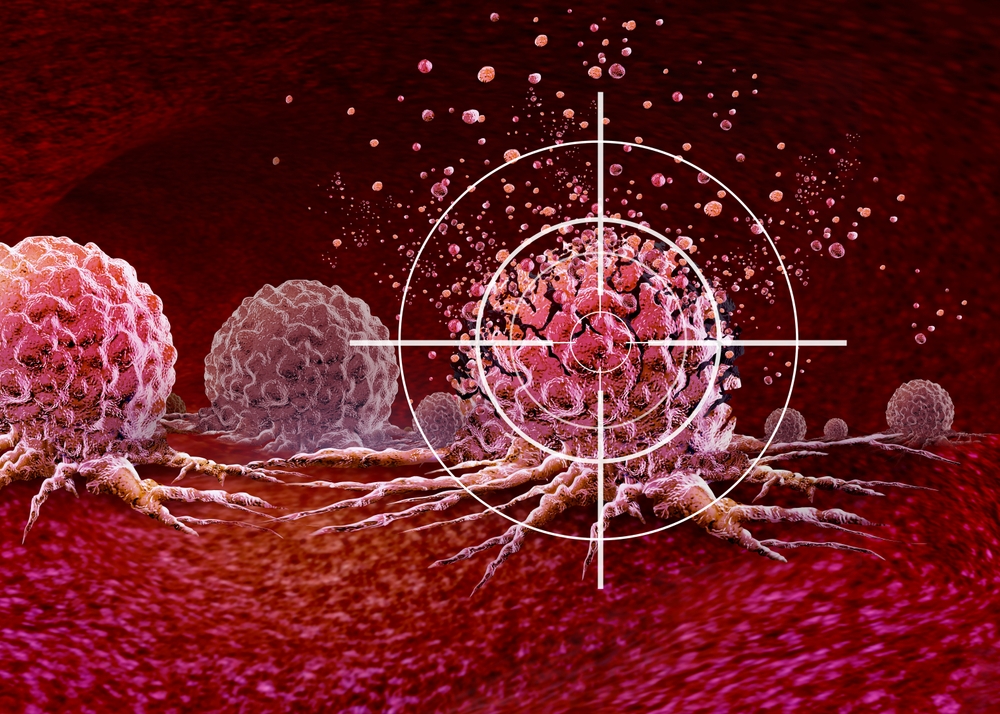Targeted Therapy For Cancer Treatments

Cancer is a complex and diverse disease, affecting millions of people worldwide. While traditional treatments such as chemotherapy, radiation therapy, and surgery have been the cornerstones of cancer care for decades, they come with significant side effects and are often not specific to cancer cells alone. In recent years, a more refined approach to cancer treatment has emerged, known as targeted therapy. This innovative form of treatment is transforming cancer care by focusing on the molecular and genetic differences in cancer cells, offering more personalized and potentially more effective options for patients.
In this blog, we will explore the key aspects of targeted therapy for cancer treatments, including its mechanisms, types, benefits, and potential challenges.
Targeted Therapy: What Makes It Different?
Targeted therapy differs significantly from traditional cancer treatments. While chemotherapy attacks rapidly dividing cells—both cancerous and healthy—targeted therapy works by specifically identifying and inhibiting the growth of cancer cells. This approach is made possible through advancements in molecular biology and genomics, which have allowed scientists to understand cancer at a cellular level.Unlike traditional therapies, which often affect the entire body, targeted therapy homes in on specific proteins, genes, or the environment of the tumor that contributes to cancer growth and survival. By blocking these targets, the therapy interferes with the cancer’s ability to grow and spread, while minimizing damage to normal cells.
How Does Targeted Therapy Work?
Cancer cells thrive due to genetic mutations or abnormalities that allow them to multiply uncontrollably. Targeted therapies are designed to interfere with the function of these mutated genes or proteins that drive cancer progression. The most common mechanisms of action in targeted therapy include:
- Blocking Cell Growth Signals: Some targeted therapies block the signals that tell cancer cells to grow. These signals are typically regulated by specific proteins, such as growth factors or their receptors. By inhibiting these proteins, targeted therapies prevent cancer cells from receiving the “grow” message.
- Inducing Cell Death (Apoptosis): Healthy cells have a natural process of programmed cell death, known as apoptosis, to prevent damaged or unnecessary cells from surviving. Cancer cells often find ways to bypass this process, leading to uncontrolled growth. Some targeted therapies restore apoptosis by activating specific cell-death pathways.
- Inhibiting Angiogenesis: Tumors need a blood supply to grow and spread. Angiogenesis inhibitors are a type of targeted therapy that blocks the formation of new blood vessels, effectively starving the tumor of the oxygen and nutrients it needs to thrive.
- Immune System Modulation: Some targeted therapies, known as immunotherapies, work by boosting the body’s immune system to recognize and destroy cancer cells. This can involve targeting specific immune checkpoints that cancer cells use to avoid detection by the immune system.
Types of Targeted Therapy for Cancer Treatments
Targeted therapies can be broadly categorized into two main types: small-molecule drugs and monoclonal antibodies. Each type has its unique approach to targeting cancer cells.
Small-Molecule Drugs
Small-molecule drugs are able to enter cells easily and can target specific proteins inside the cell that are involved in cancer progression. These drugs are often designed to interfere with enzymes or receptors that are critical for cancer cell survival. Examples of small-molecule targeted therapies include:
- Tyrosine Kinase Inhibitors (TKIs): These drugs block the action of enzymes called tyrosine kinases, which are involved in transmitting signals that promote cancer cell growth. A well-known example is imatinib (Gleevec), which is used to treat chronic myeloid leukemia (CML) by targeting the BCR-ABL protein produced by a specific genetic abnormality.
- Proteasome Inhibitors: These drugs interfere with the cell’s ability to break down proteins, leading to the accumulation of defective proteins in cancer cells and ultimately causing cell death. Bortezomib (Velcade) is an example used in the treatment of multiple myeloma.
Monoclonal Antibodies
Monoclonal antibodies are laboratory-produced molecules designed to target specific antigens on the surface of cancer cells. By binding to these antigens, they can block cancer cell growth, mark cancer cells for destruction by the immune system, or deliver cytotoxic agents directly to the tumor. Examples of monoclonal antibodies used in cancer therapy include:
- Trastuzumab (Herceptin): This drug targets the HER2 protein, which is overexpressed in some breast and stomach cancers. By binding to HER2, trastuzumab inhibits the growth of cancer cells and makes them more susceptible to chemotherapy.
- Rituximab (Rituxan): Used to treat non-Hodgkin lymphoma and chronic lymphocytic leukemia, rituximab targets the CD20 protein found on the surface of B cells, marking them for destruction by the immune system.
The Benefits of Targeted Therapy
Targeted therapy offers several key advantages over traditional cancer treatments, making it an exciting area of oncology:
1. Increased Specificity
One of the main advantages of targeted therapy is its ability to precisely attack cancer cells without harming normal cells. This specificity often leads to fewer side effects compared to chemotherapy, which affects both healthy and cancerous rapidly dividing cells.
2. Improved Efficacy in Certain Cancers
For cancers with well-defined molecular targets, targeted therapy can be more effective than conventional treatments. For instance, in cases of breast cancer that overexpress the HER2 protein, trastuzumab has shown significant success in controlling disease progression and improving survival rates.
3. Personalized Treatment
Targeted therapy represents a step towards personalized medicine, where treatments are tailored based on the specific genetic and molecular profile of an individual’s cancer. By identifying unique mutations or biomarkers, oncologists can select targeted therapies that are more likely to work for that particular patient.
4. Combination Therapy Potential
Targeted therapies can often be used in combination with other treatments, such as chemotherapy, radiation, or immunotherapy, to increase their effectiveness. These combination approaches are being studied in numerous clinical trials, offering hope for better outcomes in difficult-to-treat cancers.
Challenges and Limitations of Targeted Therapy
While targeted therapy represents a significant advancement in cancer treatment, it is not without its challenges:
1. Development of Resistance
One of the major limitations of targeted therapy is that cancer cells can eventually develop resistance to the treatment. This can occur through additional mutations that make the targeted therapy ineffective, or by activating alternative pathways that allow cancer cells to bypass the blocked target.
2. Limited Availability for All Cancers
Targeted therapies are most effective for cancers that have well-defined molecular targets. Unfortunately, not all cancers have identifiable mutations or proteins that can be targeted, limiting the applicability of these therapies.
3. Side Effects Still Possible
Although targeted therapy is generally associated with fewer side effects than traditional treatments, it is not entirely free from adverse reactions. Some common side effects include fatigue, skin rashes, diarrhea, and liver problems, depending on the drug used and the target it addresses.
4. High Costs
Targeted therapies can be expensive due to the complexity of drug development and the precision required in their design. Access to these treatments may be limited in some regions due to high costs and insurance coverage restrictions.
The Future of Targeted Therapy for Cancer Treatments
As research in cancer genomics and molecular biology continues to advance, the future of targeted therapy looks promising. With the advent of new technologies such as next-generation sequencing (NGS) and CRISPR gene editing, scientists are gaining deeper insights into the genetic drivers of cancer, paving the way for the development of even more effective and personalized treatments.
One emerging area of interest is the use of biomarker-driven clinical trials, where patients are selected for specific therapies based on the molecular profile of their tumors, regardless of the type of cancer they have. This approach could revolutionize cancer care by focusing on the underlying mechanisms of the disease rather than its location in the body.
Conclusion
Targeted therapy has revolutionized the landscape of cancer treatment, offering a more precise, effective, and personalized approach to fighting the disease. By honing in on the genetic and molecular abnormalities that drive cancer, these therapies provide hope for better outcomes with fewer side effects. However, challenges such as drug resistance, limited applicability, and cost need to be addressed for this approach to reach its full potential. As research progresses, targeted therapy is likely to play an even more significant role in the future of cancer treatments, bringing us closer to a world where cancer can be managed and, one day, cured.
 Rohit Kapoor, MD
Rohit Kapoor, MD